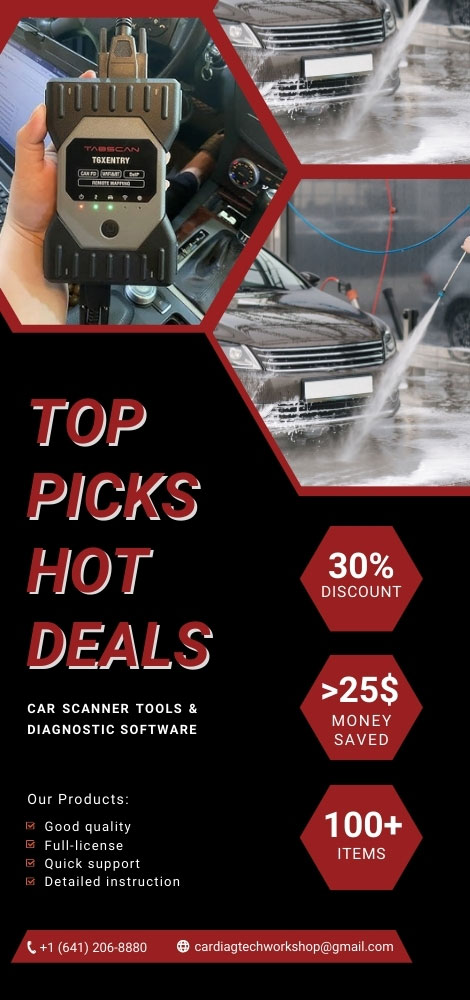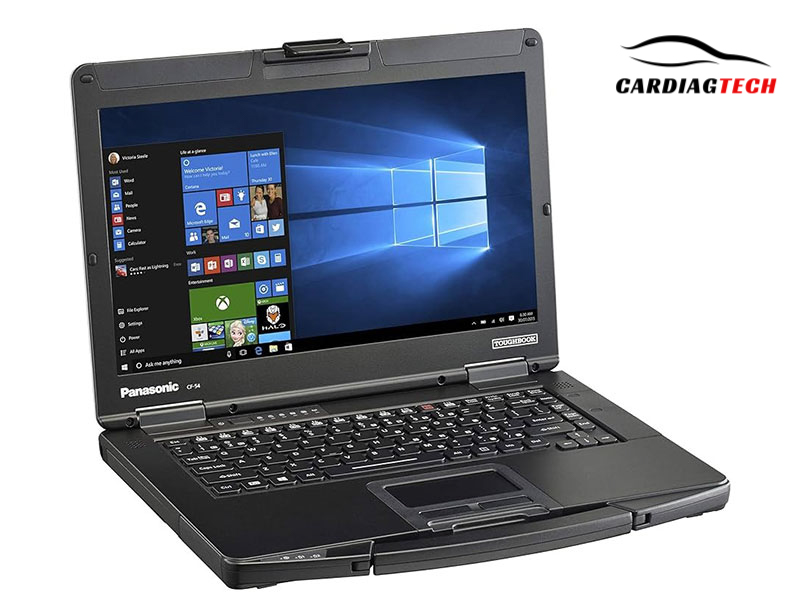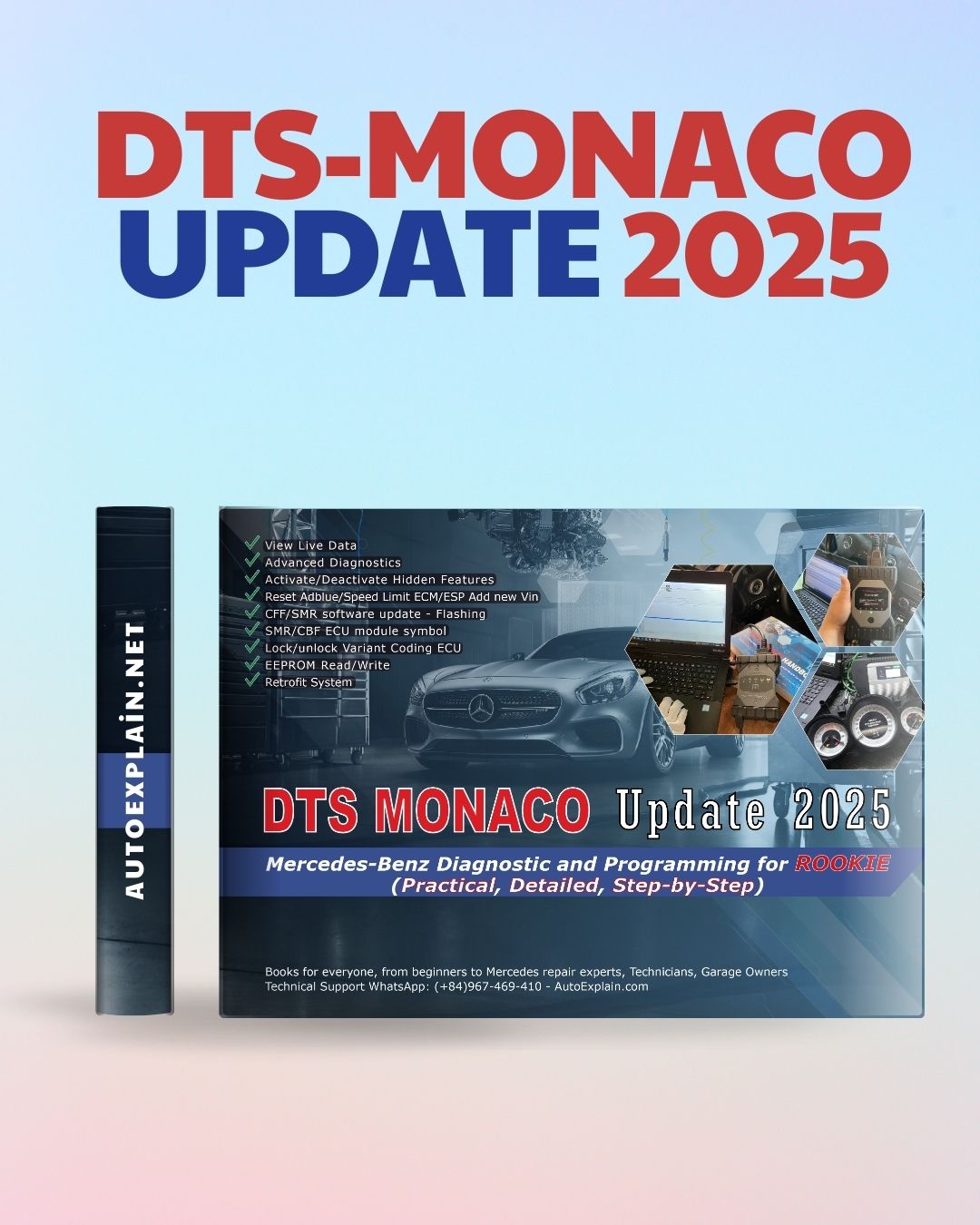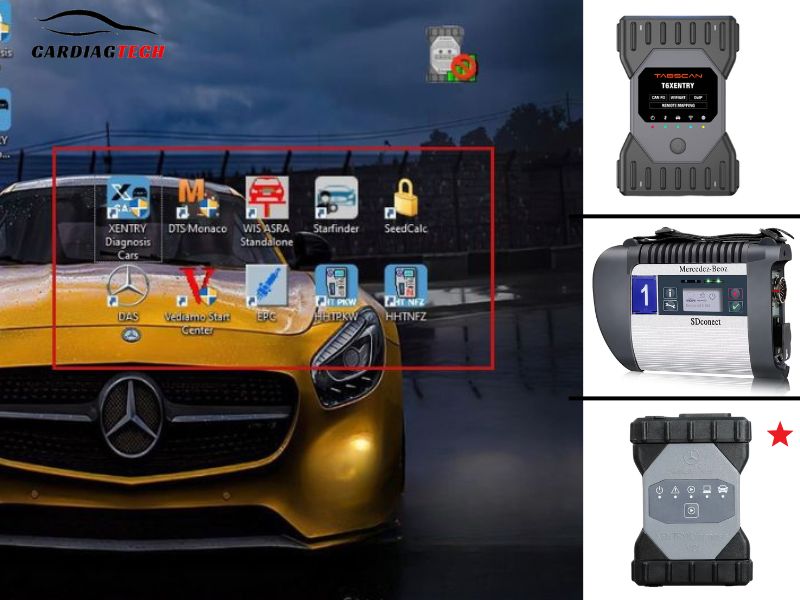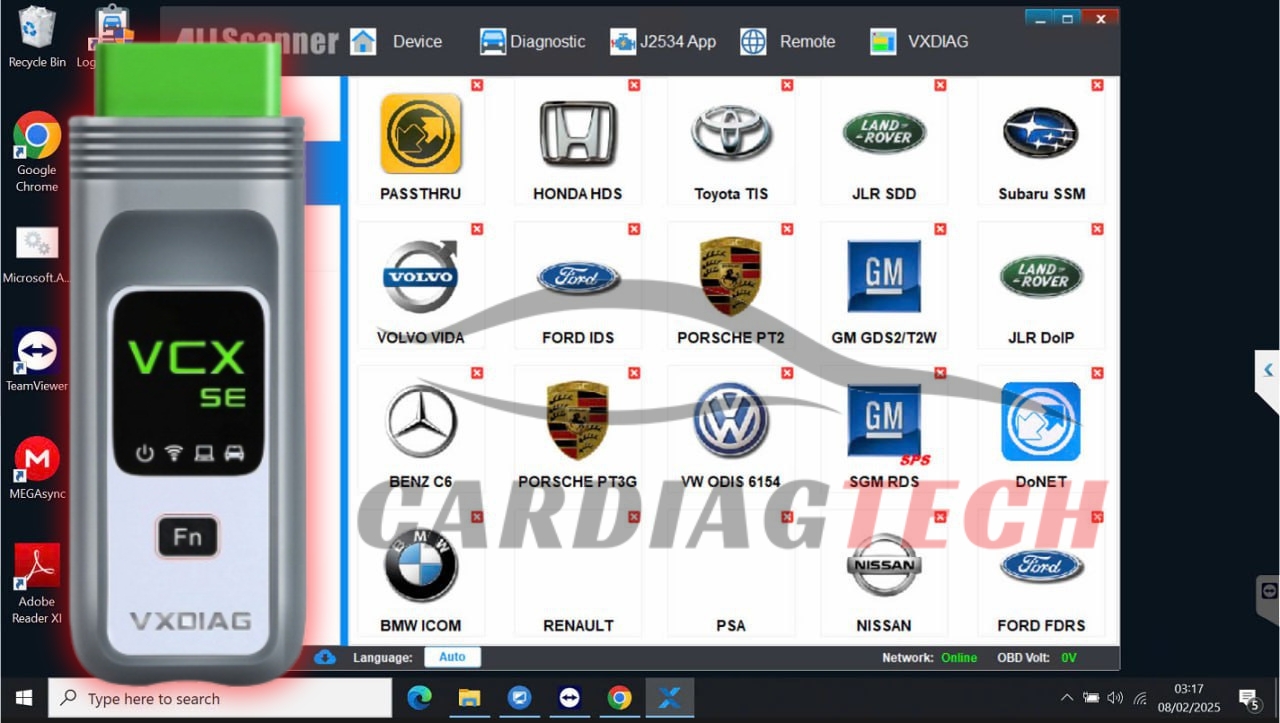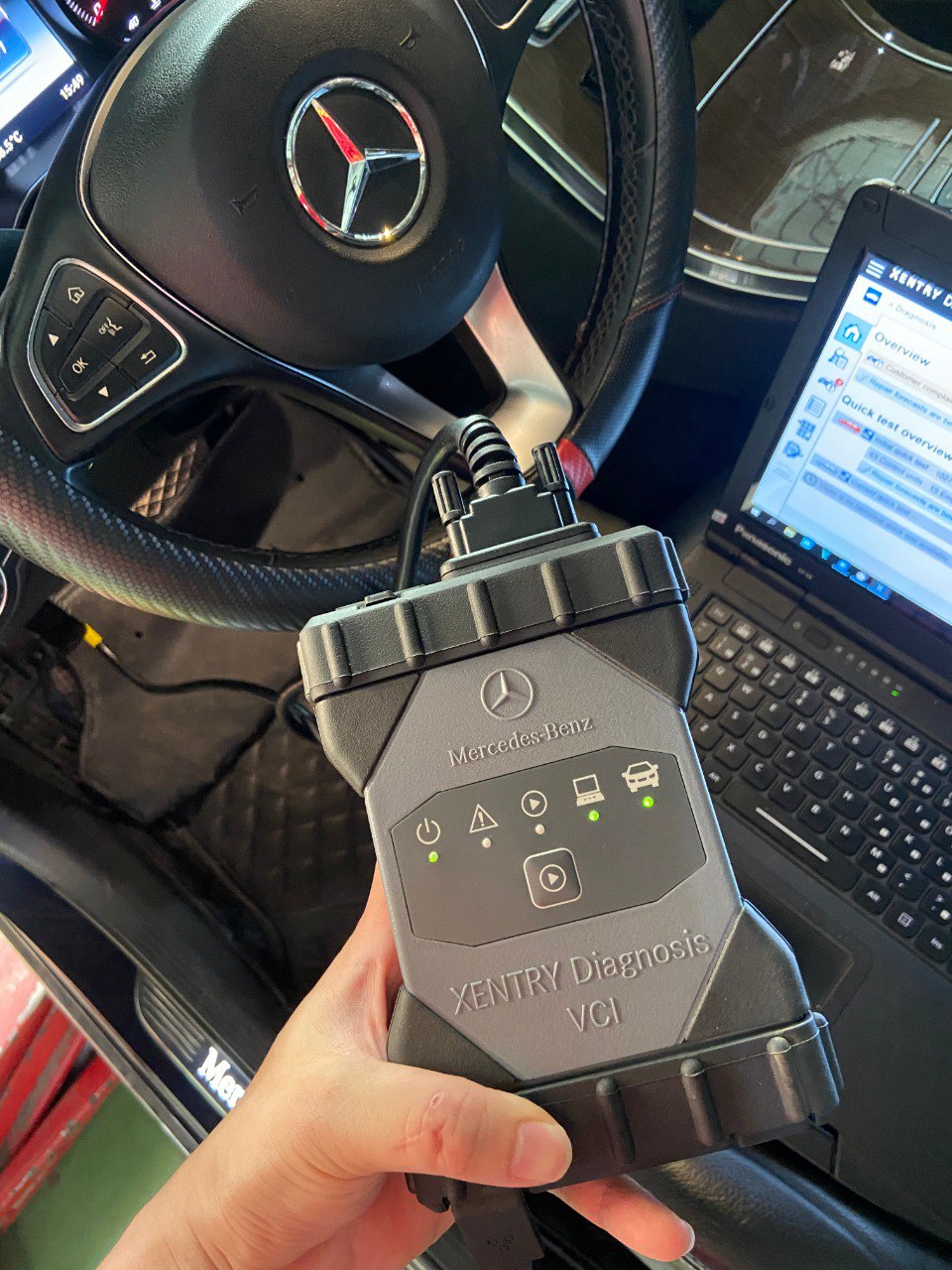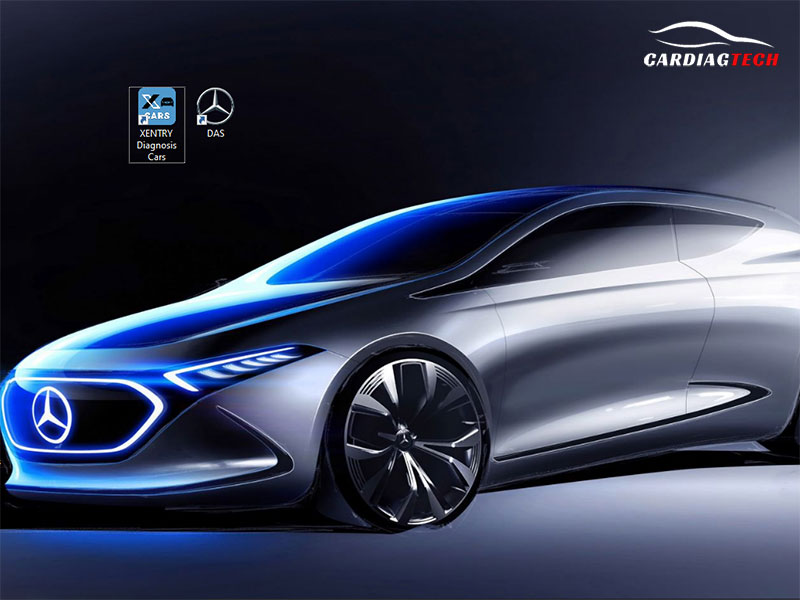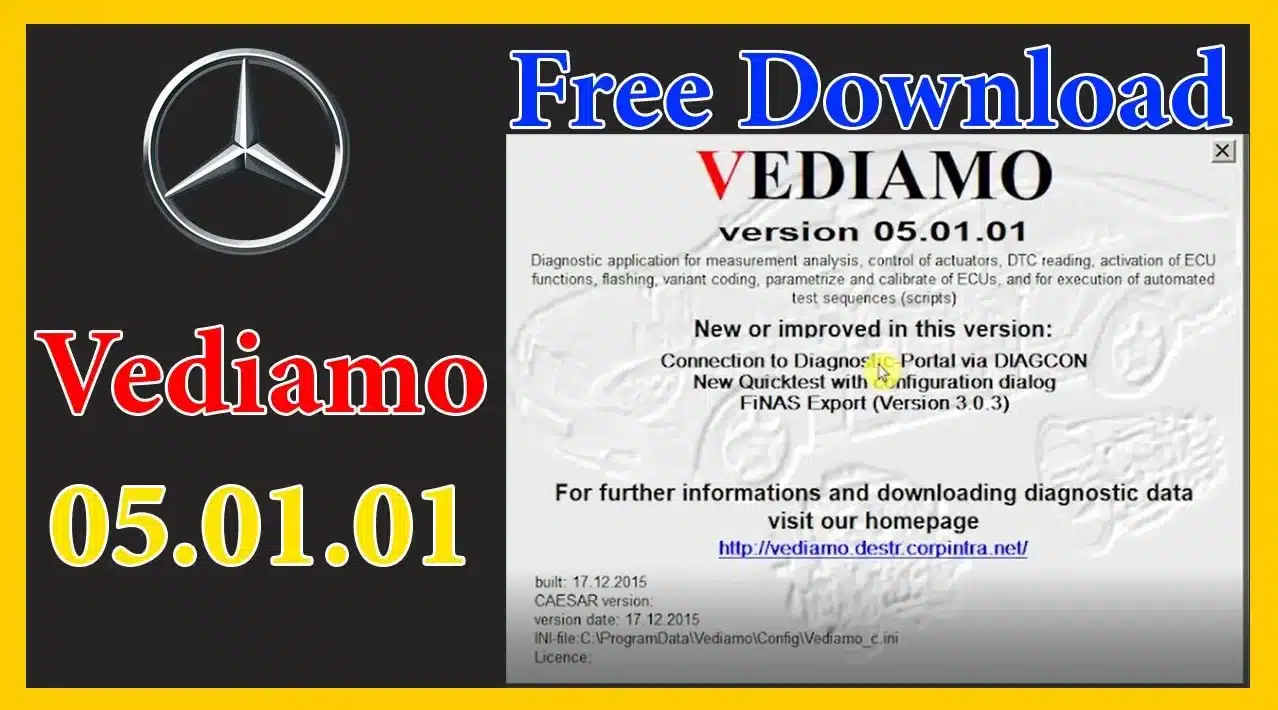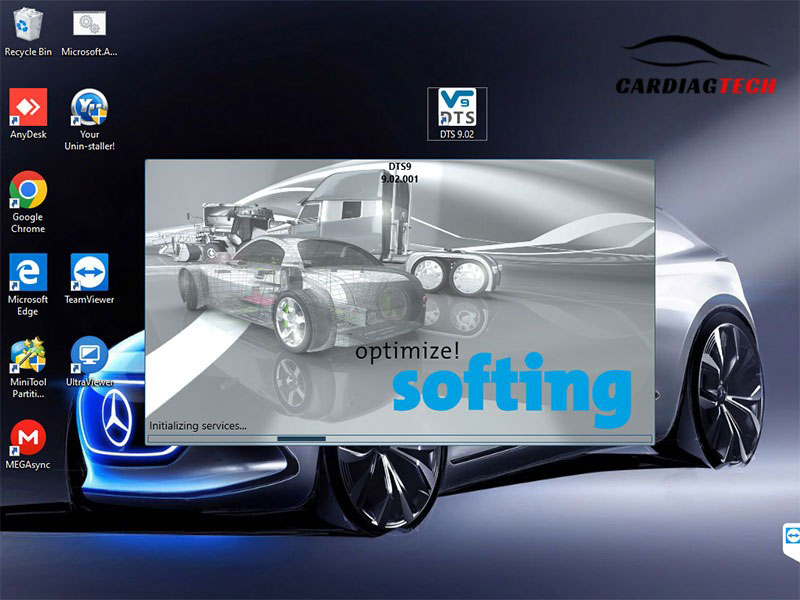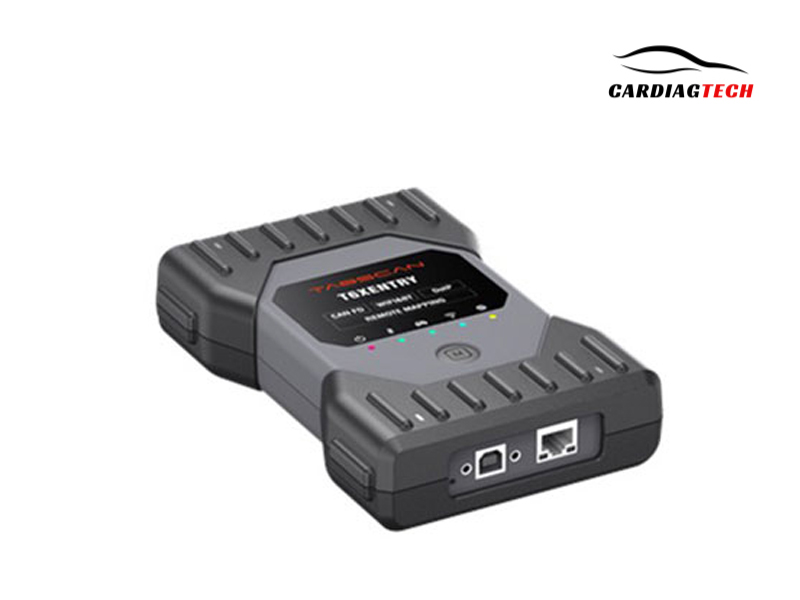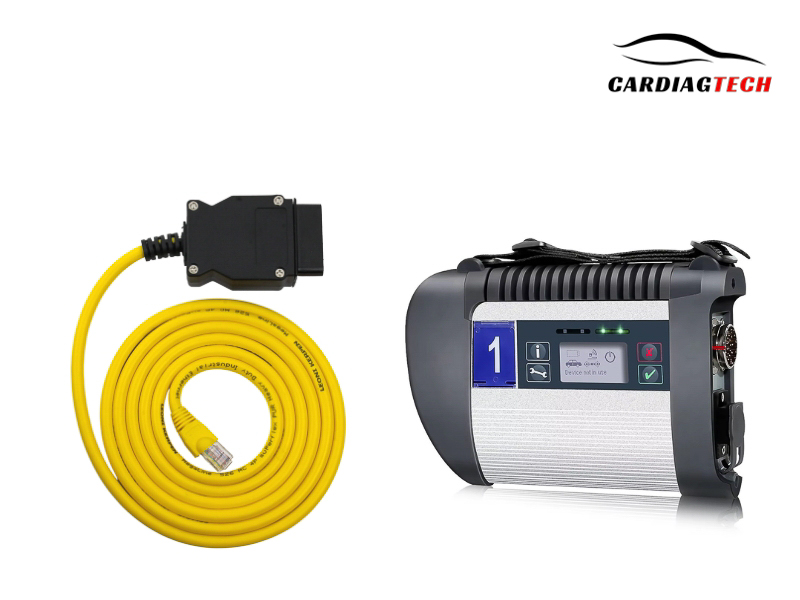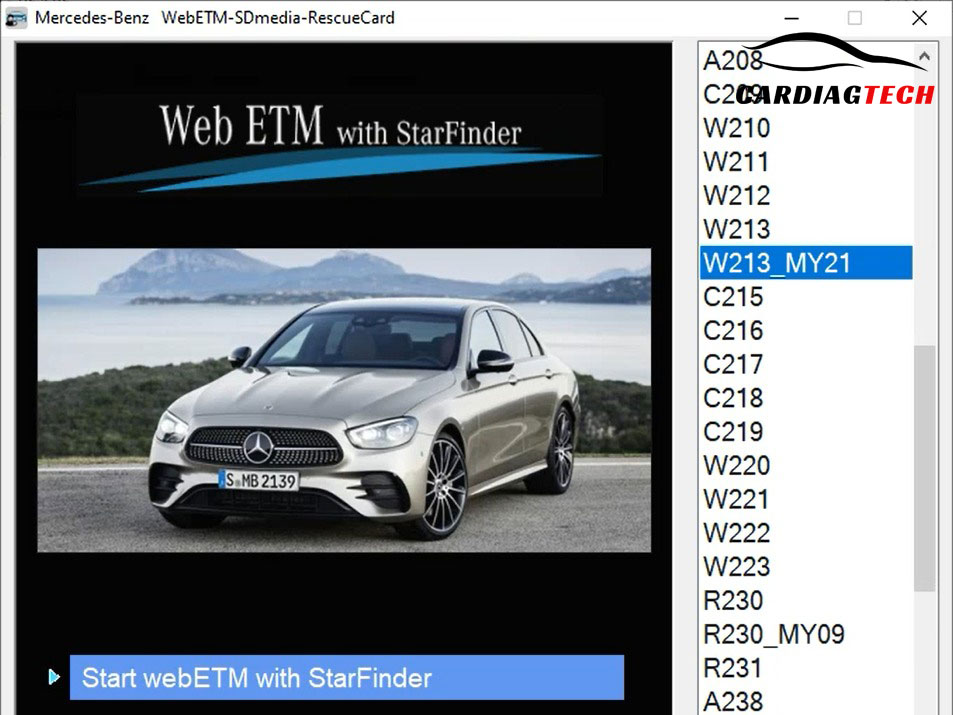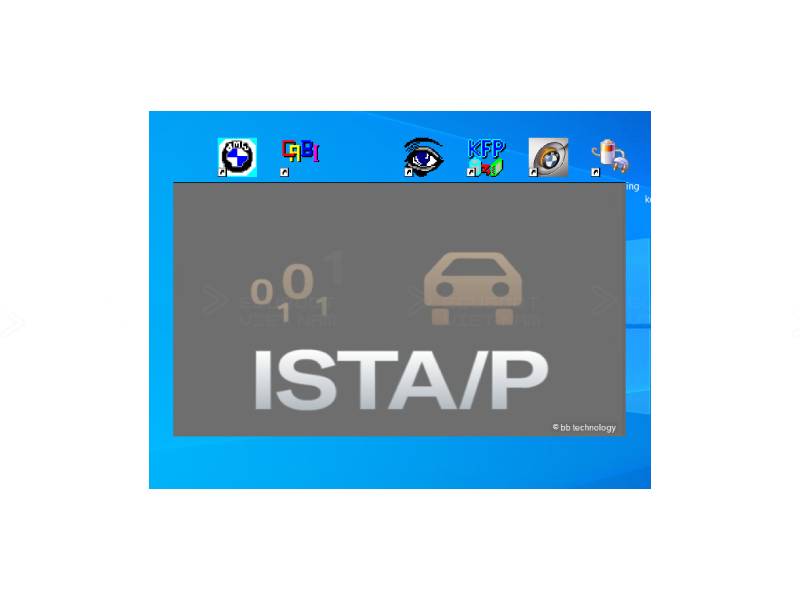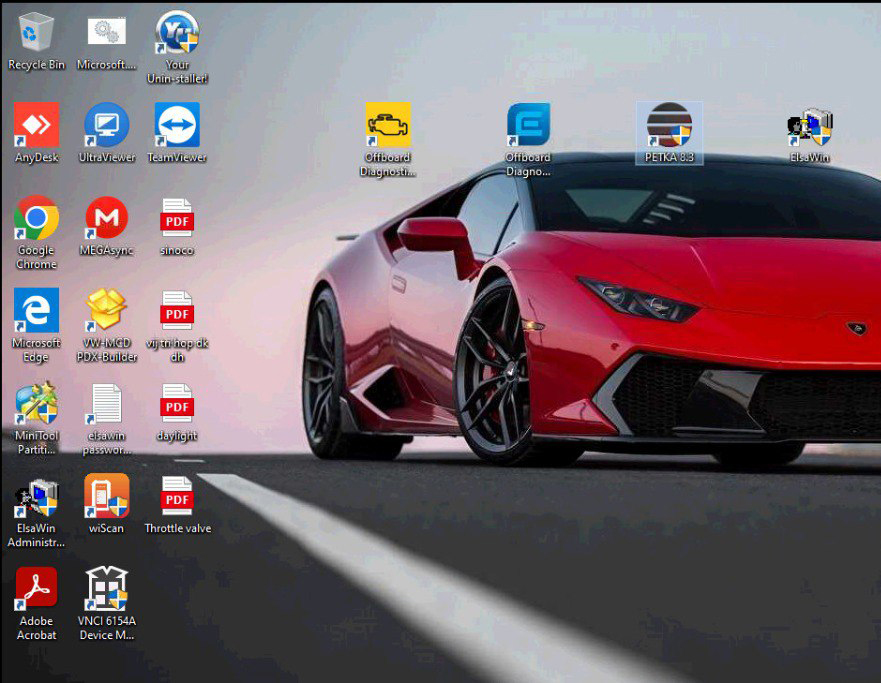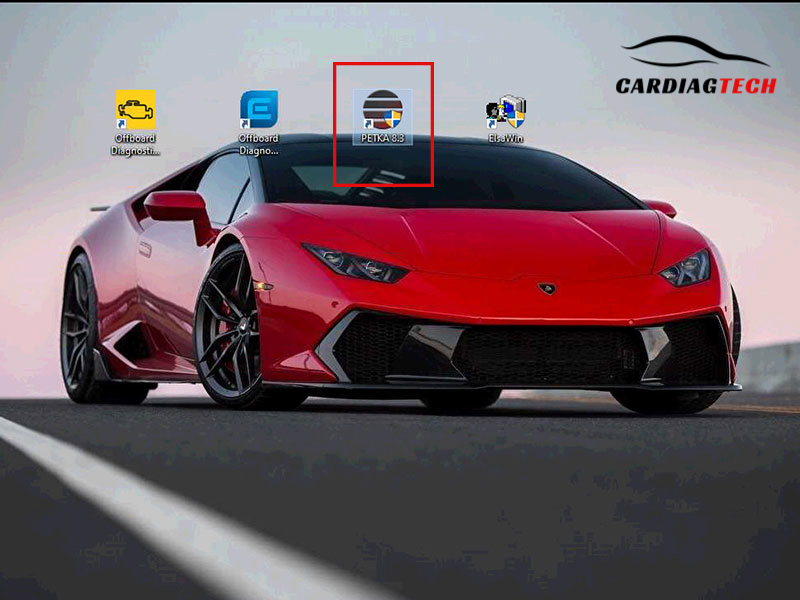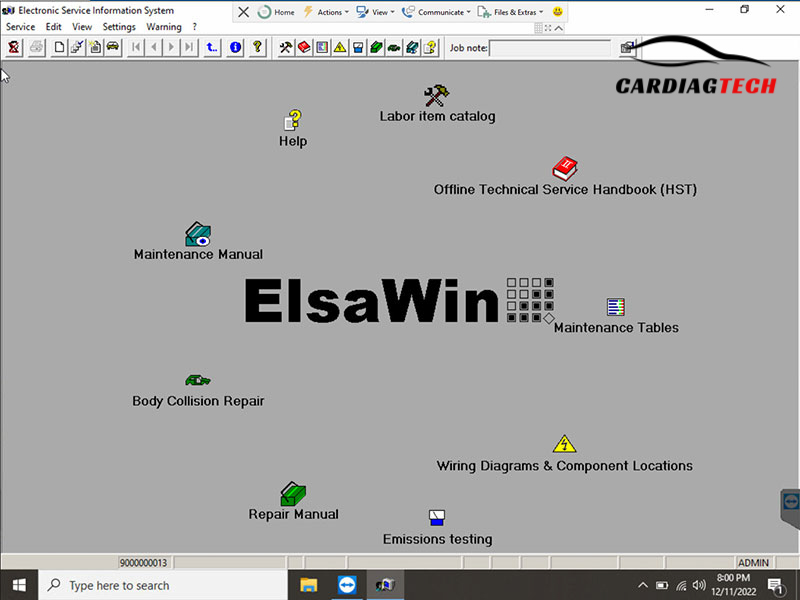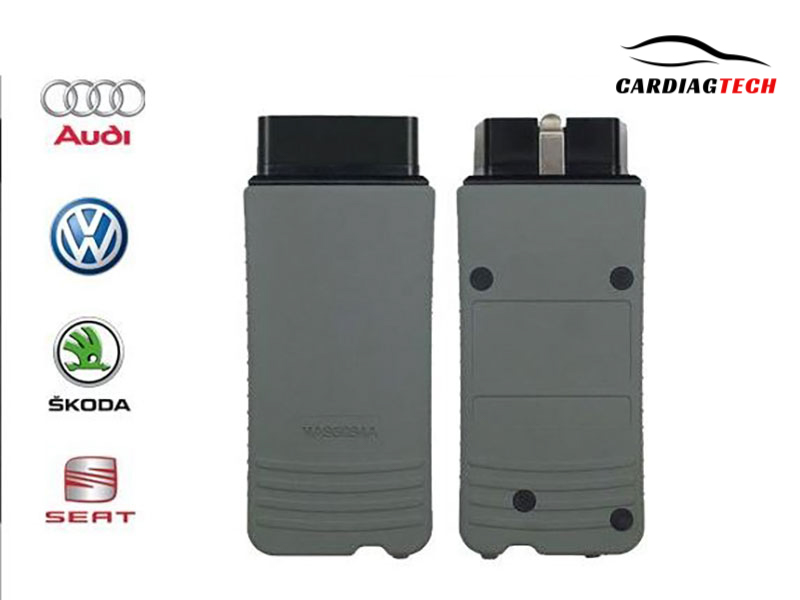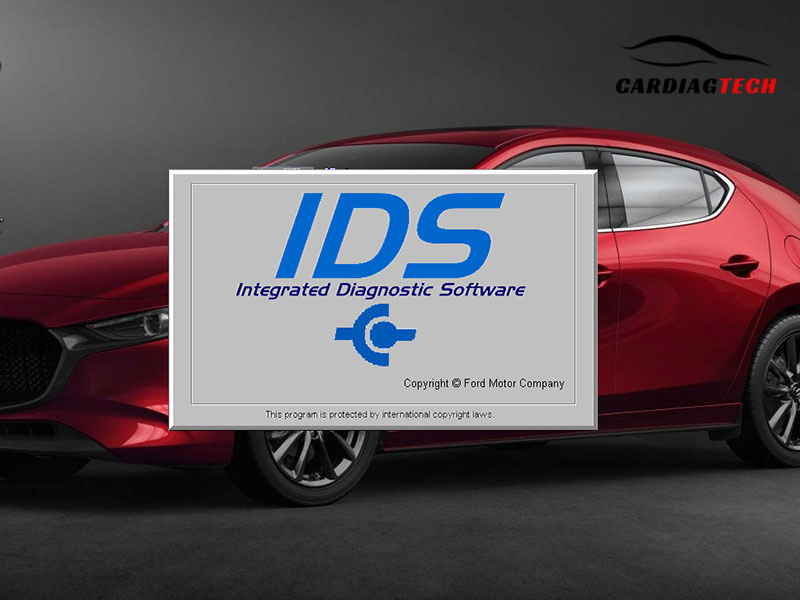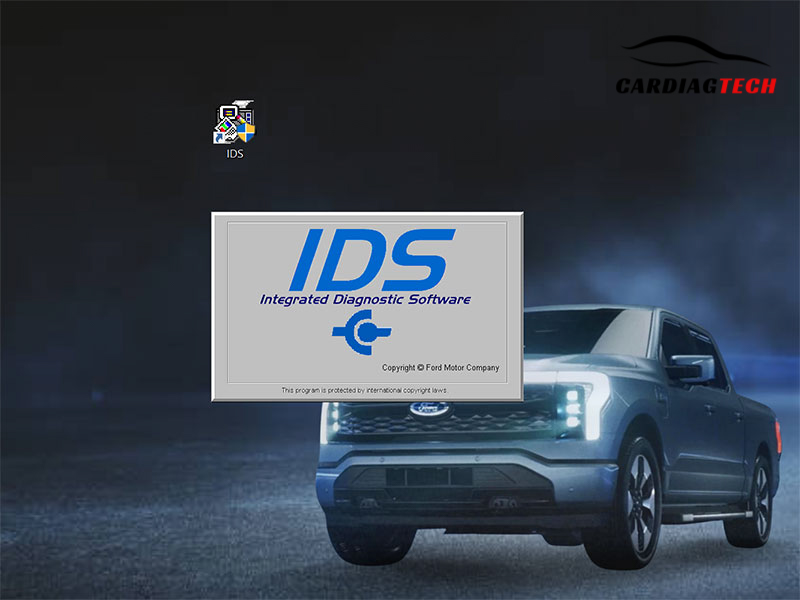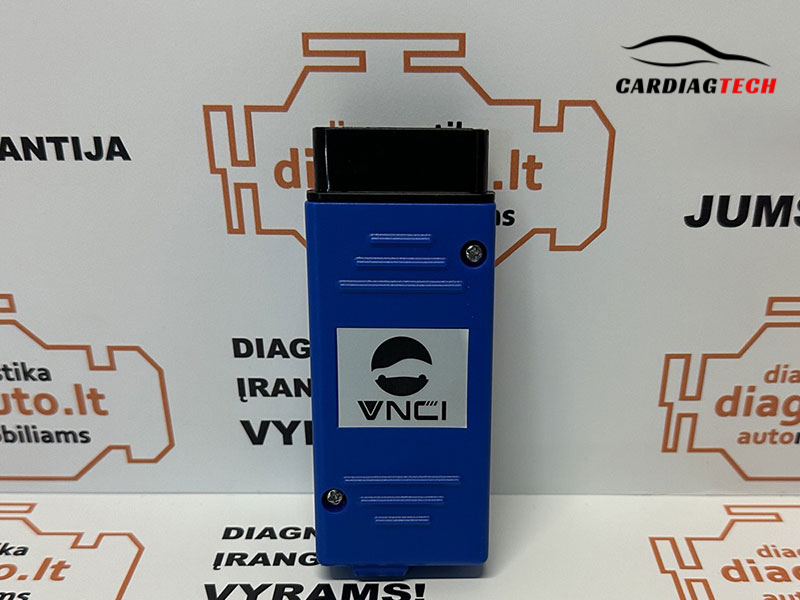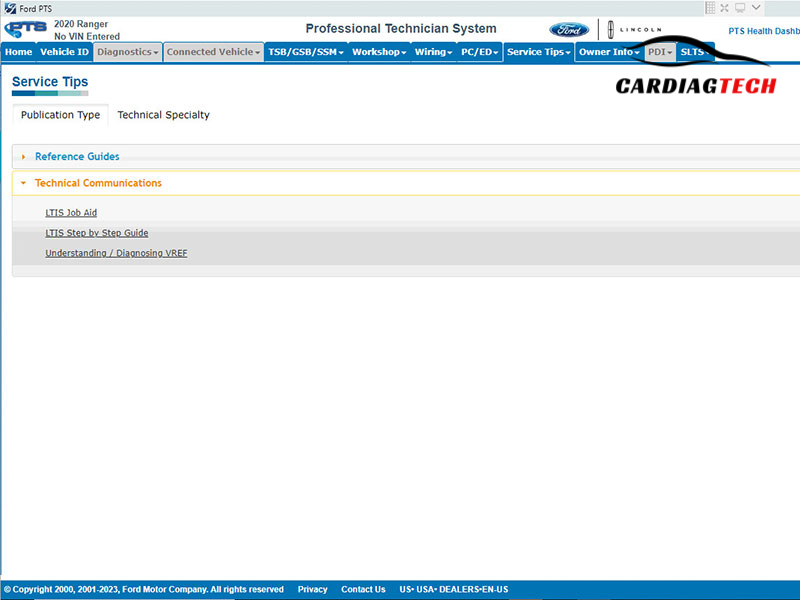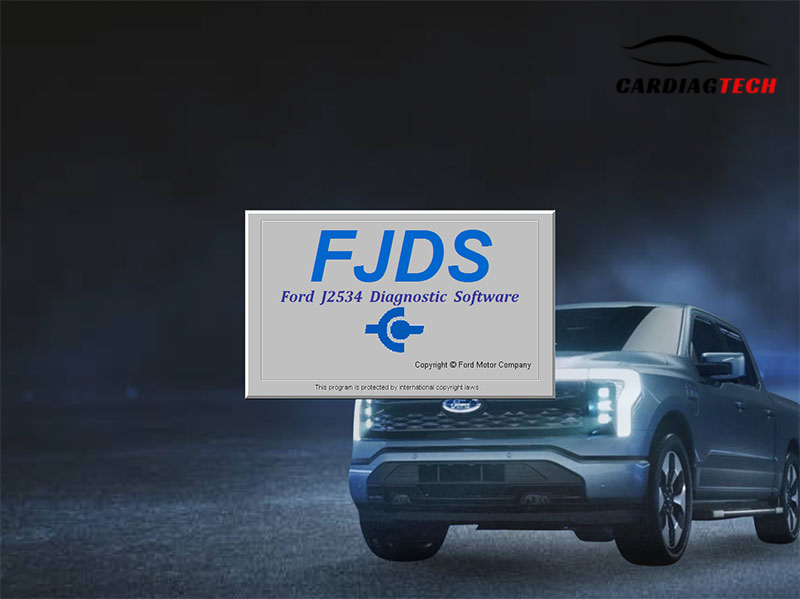Best Car Diagnostic Service
With 20 YEARS of Experience in CAR REPAIR, we believe we can help you fix errors for all car brands such as: Mercedes, BMW, Audi, Jaguar, Porsche, Bentley, Land Rover, Lexus, Ford, Mazda, Toyota…
We don’t just read error codes, we also provide deeper analysis, suggested solutions, clear error codes, and reset warning lights. Maybe you don’t know! Automotive Error Codes. <<CLICK HERE!
Car Repair Technician - Auto Repair Shop Owner
If you are a AUTO REPAIR TECHNICIAN or the owner of a CAR REPAIR WORKSHOP, the content of this website will help you a lot !!!
CARDIAGTECH is website support information CAR DIAGNOSTIC for TECHNICIANS to repair and maintain cars, guide to check problems, distinguish error codes, guide to fix errors, guide to use automotive scan tool software, Diagnostic software, coding and programming software. Guide to look up car electrical circuit diagrams, find electrical circuits or ECUs with problems and guide to look up spare parts. Make sure you can fix all error codes on the car, such as airbag errors, exhaust errors, warning lights, engine errors, electrical circuit errors, replace spare parts, modify cars, sensors, increase speed limits, Unlock Hidden Features …
01.
CAR Fault Detection
Your car has a problem that makes you uncomfortable
02.
Contact Support
It only takes 3 seconds to connect to our Technician - With 20 YEARS of Experience
03
error scanning
If you have OBD2 Scanner available, we can Check Error for free
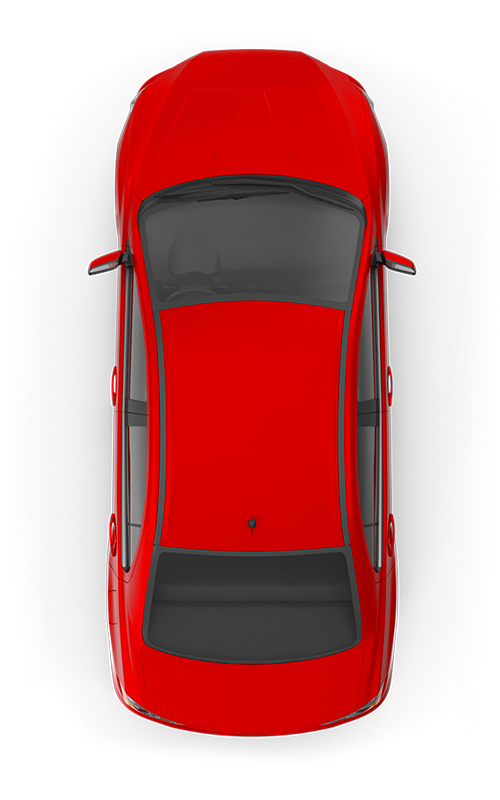
04.
Car Diagnostics
We will Accurately Diagnose the Vehicle Fault
05.
Check circuit diagram
Accurately identify the area and equipment that needs repair
06.
Coding and Programming
Reprogramming and Clearing Errors to Keep Your Vehicle Running Smoother

CardiagTech Training
Top 1 auto repair training in the world
Key Components of Auto Repair Training:
auto electrical repair techniques, auto diagnostic techniques, electronic fuel injection system repair techniques, electronic oil injection system repair techniques, automatic transmission repair techniques, ABS brake system repair techniques, auto body repair techniques, auto painting techniques, and car care techniques
About Repair and Maintenance Techniques
- Engine repair and maintenance, engine cleaning
- Repairing brake system, basic fault clearance
- Suspension and steering system repair
- Electrical system troubleshooting and repair
- Upgrade system, unlock hidden features
798+
Happy Clients
822+
Vehicle Services
99%
Diagnosis Accuracy
- CARDIAGTECH SERVICES
Online Car Inspection and Repair Service, Unlock Hidden Car Features
Software Update
Automakers constantly introduce new systems and technologies, requiring OBD software to adapt for accurate diagnostics.
Unlock hidden features
Car manufacturers sometimes include features in a vehicle's electronic control unit (ECU) that are not enabled in all models or regions.
Car Diagnostic
Car diagnostics is the process of using specialized tools and techniques to identify and analyze technical issues within a vehicle's systems.
Free Wiring Diagram
An automotive wiring diagram is a detailed technical drawing that illustrates how the electrical components in a vehicle are interconnected. It serves as a "roadmap" for the vehicle's electrical system
Car coding
Car coding involves modifying the software within a vehicle's computer systems to activate, deactivate, or customize features.
Clear warning
This is the most common method. OBD-II scanners connect to the vehicle's OBD-II port and allow you to read and clear error codes.
job training
Automotive job training is a specialized form of education designed to equip individuals with the knowledge and skills necessary to pursue a successful career in the automotive industry
Remote repair
"Car remote repair" refers to the practice of diagnosing and resolving vehicle issues without requiring the physical presence of a technician at the car's location
Get free circuit diagram lookup software when you sign up today.
Electrical wiring diagram lookup software is the most important thing when you want to repair your car.
- WHY CHOOSE US?
CARDIAGTECH is the world’s Best Remote Car Diagnostic unit
- Cost Savings:
- Diagnostic tools pinpoint issues accurately, preventing unnecessary part replacements.
- You can address simple problems yourself, avoiding costly mechanic fees.
- Time Efficiency:
- Diagnose issues at your convenience, without waiting for garage appointments.
- Quickly identifying problems allows for efficient repair planning.
- Proactive Vehicle Maintenance:
- Monitor the health of various vehicle systems, including the engine, transmission, brakes, and electrical systems.
- Early detection of abnormalities allows for preventative maintenance, preventing major breakdowns.
- Enhanced Driving Safety:
- Regularly checking critical systems ensures your vehicle operates optimally, promoting safer driving.
- Increased Vehicle Knowledge:
- Many diagnostic tools provide detailed technical information, improving your understanding of your vehicle.
- PRICING CARdiagtech
Remote repair service and auto technician training service
Support Error Fix
$29.99
- Car Fault Diagnosis
- Unlock Hidden Features
- Look up electrical circuit diagrams
- Car Re-programming and coding
Consulting Monthly
$149.99
- Check any car you request
- Find Errors and Suggestions
- Free software to look up electrical circuit diagrams
- Guide you to use all OBD software proficiently
Annual Advisor
$449.99
- Step by Step Detailed Instructions
- Fix all Common Errors
- 24/7 Online Support
- Answer all your questions
Learn at the center
$989.99
- Direct training at the Workshop
- Learn and practice on Real Cars
- Full meal support, 3 meals a day
- Commitment to Become an Expert After the Course
BEST combo for auto repair service workshop
-
$550.0Original price was: $550.0.$449.0Current price is: $449.0. -
$700.0Original price was: $700.0.$599.0Current price is: $599.0. -
$1,000.0Original price was: $1,000.0.$750.0Current price is: $750.0. -
$1,300.0Original price was: $1,300.0.$1,100.0Current price is: $1,100.0.
Beginning or inexperienced auto repair technicians
Beginning or inexperienced auto repair technicians should try to equip themselves with the following books. This is a detailed manual by experienced experts, providing specific instructions for each software for each vehicle model, and detailed instructions for fixing each type of error. When you buy the book, you will receive in-depth instructions from the technical team on detailed car repair expertise according to the actual error your vehicle is experiencing.
-
$350.0Original price was: $350.0.$300.0Current price is: $300.0. -
$1,200.0Original price was: $1,200.0.$980.0Current price is: $980.0. -
$700.0Original price was: $700.0.$500.0Current price is: $500.0. -
$300.0Original price was: $300.0.$250.0Current price is: $250.0. -
$300.0Original price was: $300.0.$125.0Current price is: $125.0. -
$300.0Original price was: $300.0.$250.0Current price is: $250.0. -
$300.0Original price was: $300.0.$250.0Current price is: $250.0. -
$300.0Original price was: $300.0.$250.0Current price is: $250.0.
Mercedes benz Diagnostic Tool
CARDIAGTECH provides full support for auto repair technicians and auto repair shops, from auto repair parts, to OBD2, J2534 connection cables, Scan Tool devices, specialized computers for auto repairmen, specialized equipment, and error reading and clearing software, coding software, programming software…
-
$180.0 – $830.0 This product has multiple variants. The options may be chosen on the product page
-
$180.0 – $535.0 This product has multiple variants. The options may be chosen on the product page
-
-
-
$650.0 – $830.0 This product has multiple variants. The options may be chosen on the product page
-
$795.0 – $1,895.0 This product has multiple variants. The options may be chosen on the product page
-
-
-
-
$699.0Original price was: $699.0.$615.0Current price is: $615.0. -
$590.0Original price was: $590.0.$530.0Current price is: $530.0.
BMW
VAG diagnostic tools
-
$180.0 – $535.0This product has multiple variants. The options may be chosen on the product page
-
$60.0 – $100.0This product has multiple variants. The options may be chosen on the product page
-
$380.0 – $1,479.0This product has multiple variants. The options may be chosen on the product page
-
$200.0Original price was: $200.0.$160.0Current price is: $160.0.
Ford-Mazda Diagnostic Tool
-
-
$180.0 – $535.0This product has multiple variants. The options may be chosen on the product page
-
$300.0Original price was: $300.0.$250.0Current price is: $250.0.
Technical Support Car Repair is essential for diagnosing and fixing modern vehicle issues efficiently. At CARDIAGTECH.BIZ, we provide comprehensive solutions and tools to empower car owners, repair shops, and automotive technicians. Explore our range of diagnostic tools and software to enhance your repair capabilities and ensure customer satisfaction. Our expertise in remote diagnostics and software installation positions us as a leader in the automotive repair industry, delivering unmatched support and resources to keep you ahead.
1. Understanding the Importance of Technical Support in Car Repair
Technical support in car repair is critical in today’s technologically advanced automotive landscape. It provides the necessary expertise and tools to diagnose and resolve complex issues that are beyond the scope of traditional mechanical knowledge.
Why is Technical Support Essential?
- Modern Vehicle Complexity: Modern cars incorporate numerous electronic systems, including engine control units (ECUs), transmission control modules (TCMs), and advanced driver-assistance systems (ADAS). Diagnosing and repairing these systems requires specialized knowledge and equipment.
- Diagnostic Accuracy: Technical support ensures accurate diagnostics, reducing the likelihood of misdiagnosis and unnecessary repairs.
- Efficient Repairs: With the right technical support, repairs can be completed more efficiently, saving time and money for both technicians and customers.
- Customer Satisfaction: Providing reliable and accurate repairs enhances customer satisfaction and builds trust in your services.
- ADAS calibration after repairs: Do ADAS (Advanced Driver Assistance Systems) require calibration after repairs like windshield replacement or alignment? Yes, ADAS calibration is often required after such repairs to ensure the systems function correctly.
How CARDIAGTECH.BIZ Enhances Technical Support
CARDIAGTECH.BIZ provides cutting-edge diagnostic tools and software solutions tailored to meet the needs of modern automotive repair. Our comprehensive support system ensures you have the resources needed to tackle any repair challenge effectively. Contact us via Whatsapp at +1 (641) 206-8880 or visit our location at 276 Reock St, City of Orange, NJ 07050, United States, for immediate assistance.
2. Identifying Common Car Repair Issues Requiring Technical Support
Many car repair issues necessitate technical support due to the complexity of modern automotive systems. Recognizing these issues is the first step in seeking appropriate assistance.
Common Issues Requiring Technical Support:
- Engine Control Unit (ECU) Problems:
- Symptoms: Engine misfires, poor fuel economy, failure to start.
- Technical Support Needs: ECU reprogramming, sensor diagnostics, and wiring harness repairs.
- Transmission Control Module (TCM) Issues:
- Symptoms: Erratic shifting, failure to shift, transmission slipping.
- Technical Support Needs: TCM reprogramming, solenoid testing, and transmission diagnostics.
- Anti-lock Braking System (ABS) Malfunctions:
- Symptoms: ABS light illumination, brake failure, uneven braking.
- Technical Support Needs: ABS module diagnostics, sensor replacement, and hydraulic system repairs. Addressing an ABS light on car while driving requires specialized diagnostic tools.
- Advanced Driver-Assistance Systems (ADAS) Failures:
- Symptoms: Lane departure warning malfunctions, adaptive cruise control failures, blind-spot monitoring issues.
- Technical Support Needs: ADAS calibration, sensor alignment, and system reprogramming.
- Electrical System Problems:
- Symptoms: Battery drain, alternator failure, wiring issues.
- Technical Support Needs: Circuit testing, wiring harness repairs, and component diagnostics.
- Airbag System Issues:
- Symptoms: Airbag warning light, deployment failures.
- Technical Support Needs: SRS module diagnostics, sensor replacement, and system resetting.
Tools and Software from CARDIAGTECH.BIZ
CARDIAGTECH.BIZ offers a wide range of diagnostic tools and software designed to address these common issues. Our products ensure technicians have the necessary resources to diagnose and repair modern vehicles accurately and efficiently.
3. Utilizing Diagnostic Tools for Efficient Car Repair
Diagnostic tools are indispensable for efficient car repair. They allow technicians to quickly and accurately identify problems, reducing downtime and improving repair quality.
Types of Diagnostic Tools:
- OBD-II Scanners:
- Function: Read diagnostic trouble codes (DTCs) from the vehicle’s computer.
- Benefits: Quick identification of problems, access to live data, and emission readiness testing.
- Multimeters:
- Function: Measure voltage, current, and resistance in electrical circuits.
- Benefits: Essential for diagnosing electrical problems and verifying component functionality.
- Oscilloscopes:
- Function: Display electrical signals over time, allowing technicians to analyze waveforms.
- Benefits: Advanced diagnostics of complex electrical systems, such as ECUs and sensors.
- Pressure Testers:
- Function: Measure pressure in various systems, such as fuel, oil, and cooling systems.
- Benefits: Diagnose leaks and pressure-related problems.
- Smoke Machines:
- Function: Detect leaks in vacuum and exhaust systems.
- Benefits: Efficiently locate hard-to-find leaks that can affect engine performance.
- Specialized Diagnostic Software:
- Function: Provide in-depth diagnostics, programming, and calibration for specific vehicle systems.
- Benefits: Advanced capabilities for modern vehicles, including ADAS calibration and ECU reprogramming.
CARDIAGTECH.BIZ Solutions
CARDIAGTECH.BIZ provides a comprehensive suite of diagnostic tools and software, ensuring that technicians have the right equipment for any repair scenario. Our tools are designed for ease of use, accuracy, and reliability, making your repair process more efficient.
4. Step-by-Step Guide to Diagnosing Car Problems with Technical Support
Diagnosing car problems effectively requires a systematic approach combined with expert technical support. Here’s a step-by-step guide:
Step 1: Gather Information
- Talk to the Customer: Collect detailed information about the problem, including when it occurs, under what conditions, and any recent repairs or maintenance.
- Review Vehicle History: Check the vehicle’s maintenance records for any relevant information.
Step 2: Perform a Visual Inspection
- Check for Obvious Issues: Look for visible signs of damage, leaks, or worn components.
- Inspect Fluid Levels: Verify that all fluid levels (oil, coolant, brake fluid, power steering fluid) are within the recommended ranges.
Step 3: Use Diagnostic Tools
- Connect an OBD-II Scanner: Retrieve diagnostic trouble codes (DTCs) and record them.
- Analyze the DTCs: Use a repair database or technical support resources to understand the meaning of the codes.
Step 4: Verify the Symptoms
- Test Drive the Vehicle: If possible, test drive the vehicle to replicate the problem and gather additional information.
- Monitor Live Data: Use the OBD-II scanner to monitor live data parameters, such as engine temperature, fuel trims, and sensor readings.
Step 5: Isolate the Problem
- Perform Component Tests: Use a multimeter, oscilloscope, or other diagnostic tools to test individual components.
- Check Wiring and Connections: Inspect wiring harnesses and connectors for damage, corrosion, or loose connections.
Step 6: Seek Technical Support
- Consult Technical Resources: Use online databases, repair manuals, and technical forums to research the problem.
- Contact CARDIAGTECH.BIZ: If you need further assistance, contact our technical support team at +1 (641) 206-8880 for expert guidance.
Step 7: Repair and Verify
- Perform the Necessary Repairs: Replace faulty components, repair wiring, or reprogram modules as needed.
- Clear the DTCs: After completing the repairs, clear the diagnostic trouble codes and perform a test drive to verify that the problem is resolved.
CARDIAGTECH.BIZ Support
CARDIAGTECH.BIZ offers comprehensive technical support throughout the diagnostic process. Our team of experts is available to assist you with any questions or challenges you may encounter.
5. Remote Diagnostics: A Modern Solution for Car Repair
Remote diagnostics is a modern solution that leverages technology to diagnose and repair vehicles remotely. This approach can save time and money by reducing the need for in-person visits.
How Remote Diagnostics Works:
- Vehicle Connection: A diagnostic tool is connected to the vehicle’s OBD-II port.
- Data Transmission: The diagnostic tool transmits data to a remote technician.
- Remote Analysis: The technician analyzes the data and provides instructions for repairs.
- Real-Time Guidance: The technician can provide real-time guidance during the repair process.
Benefits of Remote Diagnostics:
- Reduced Downtime: Remote diagnostics can quickly identify problems, reducing downtime and improving efficiency.
- Cost Savings: Eliminates the need for costly in-person visits.
- Expert Access: Access to specialized technicians who may not be available locally.
- Convenience: Repairs can be performed at the customer’s location, providing added convenience.
CARDIAGTECH.BIZ Remote Diagnostic Services
CARDIAGTECH.BIZ offers advanced remote diagnostic services to help you quickly and accurately diagnose vehicle problems. Our remote diagnostic tools and software are designed to work seamlessly, providing real-time data and expert guidance.
6. Software Programming and Calibration in Car Repair
Software programming and calibration are critical aspects of modern car repair. They involve updating or modifying the software in a vehicle’s electronic control units (ECUs) to improve performance, fix bugs, or install new features.
Why is Software Programming and Calibration Important?
- ECU Updates: Automakers regularly release software updates to address performance issues, improve fuel economy, and fix bugs.
- Component Replacement: When replacing an ECU or other electronic component, it may be necessary to program or calibrate the new module to ensure it works correctly with the vehicle’s other systems.
- Performance Tuning: Software programming can be used to improve a vehicle’s performance, such as increasing horsepower or improving throttle response.
- ADAS Calibration: Advanced Driver-Assistance Systems (ADAS) require precise calibration to ensure they function correctly. This involves using specialized equipment to align sensors and cameras.
CARDIAGTECH.BIZ Software Solutions
CARDIAGTECH.BIZ provides a range of software programming and calibration tools to meet the needs of modern car repair. Our solutions include:
- ECU Programming Software: Software for updating and reprogramming ECUs.
- ADAS Calibration Tools: Equipment and software for calibrating ADAS systems.
- Diagnostic Software: Comprehensive diagnostic software for identifying and resolving vehicle problems.
7. Choosing the Right Technical Support Provider
Selecting the right technical support provider is crucial for ensuring efficient and accurate car repairs. Here are some factors to consider when choosing a provider:
Factors to Consider:
- Expertise: The provider should have extensive knowledge and experience in diagnosing and repairing modern vehicles.
- Response Time: Quick response times are essential for minimizing downtime and keeping your business running smoothly.
- Range of Services: The provider should offer a comprehensive range of services, including remote diagnostics, software programming, and calibration.
- Tools and Equipment: The provider should have access to the latest diagnostic tools and equipment.
- Customer Support: Excellent customer support is essential for resolving any issues or questions you may have.
- Reputation: Check the provider’s reputation by reading online reviews and testimonials.
Why Choose CARDIAGTECH.BIZ?
CARDIAGTECH.BIZ is a leading provider of technical support for car repair. We offer:
- Expert Technicians: Our team of experienced technicians has extensive knowledge of modern vehicle systems.
- Fast Response Times: We provide quick response times to minimize downtime.
- Comprehensive Services: We offer a full range of services, including remote diagnostics, software programming, and ADAS calibration.
- Advanced Tools: We use the latest diagnostic tools and equipment.
- Excellent Customer Support: Our customer support team is available to assist you with any questions or issues.
- Proven Reputation: We have a proven track record of providing high-quality technical support to our customers.
8. Optimizing Your Car Repair Business with Technical Support
Technical support can significantly enhance your car repair business by improving efficiency, accuracy, and customer satisfaction.
How Technical Support Can Help:
- Improved Diagnostics: Technical support can help you quickly and accurately diagnose vehicle problems, reducing the likelihood of misdiagnosis and unnecessary repairs.
- Efficient Repairs: With the right technical support, repairs can be completed more efficiently, saving time and money.
- Increased Customer Satisfaction: Providing reliable and accurate repairs enhances customer satisfaction and builds trust in your services.
- Expanded Service Offerings: Technical support can enable you to offer a wider range of services, such as ADAS calibration and ECU programming.
- Reduced Downtime: Quick access to technical support can minimize downtime and keep your business running smoothly.
- Competitive Advantage: By leveraging technical support, you can gain a competitive advantage over other repair shops that lack the necessary expertise and tools.
CARDIAGTECH.BIZ Solutions for Business Optimization
CARDIAGTECH.BIZ offers a range of solutions designed to help you optimize your car repair business. Our diagnostic tools, software, and technical support services can help you improve efficiency, accuracy, and customer satisfaction.
9. Training and Resources for Automotive Technicians
Continuous training and access to resources are essential for automotive technicians to stay up-to-date with the latest technologies and repair techniques.
Importance of Training:
- Technological Advancements: The automotive industry is constantly evolving, with new technologies and systems being introduced regularly.
- Diagnostic Skills: Training enhances diagnostic skills, enabling technicians to quickly and accurately identify vehicle problems.
- Repair Techniques: Training provides technicians with the knowledge and skills needed to perform repairs efficiently and effectively.
- Safety: Proper training ensures that technicians can perform repairs safely, protecting themselves and their customers.
Resources for Automotive Technicians:
- Online Courses: Online courses offer a convenient way to learn new skills and stay up-to-date with the latest technologies.
- Technical Manuals: Technical manuals provide detailed information about vehicle systems and repair procedures.
- Technical Forums: Technical forums allow technicians to connect with peers, share knowledge, and ask questions.
- Industry Certifications: Industry certifications, such as ASE (Automotive Service Excellence) certification, demonstrate competence and professionalism.
CARDIAGTECH.BIZ Training and Resources
CARDIAGTECH.BIZ is committed to providing automotive technicians with the training and resources they need to succeed. We offer:
- Training Programs: Comprehensive training programs on diagnostic tools, software programming, and ADAS calibration.
- Technical Support: Expert technical support to assist you with any questions or challenges you may encounter.
- Online Resources: Access to online databases, repair manuals, and technical forums.
10. Future Trends in Technical Support for Car Repair
The field of technical support for car repair is constantly evolving, with new technologies and trends emerging. Staying informed about these trends is essential for staying ahead of the curve.
Key Trends:
- Artificial Intelligence (AI): AI is being used to develop advanced diagnostic tools that can quickly and accurately identify vehicle problems.
- Augmented Reality (AR): AR is being used to provide technicians with real-time guidance during the repair process.
- Remote Diagnostics: Remote diagnostics is becoming more prevalent, allowing technicians to diagnose and repair vehicles remotely.
- Electric Vehicles (EVs): The rise of EVs is creating new challenges for car repair, requiring specialized knowledge and equipment.
- Cybersecurity: As vehicles become more connected, cybersecurity is becoming increasingly important.
CARDIAGTECH.BIZ: Leading the Way
CARDIAGTECH.BIZ is committed to staying at the forefront of these trends, providing our customers with the latest technologies and solutions for car repair.
Summary of CARDIAGTECH.BIZ Offerings:
| Service/Tool | Description | Benefits |
|---|---|---|
| Diagnostic Tools | Wide range of OBD-II scanners, multimeters, oscilloscopes, pressure testers, and smoke machines. | Accurate and quick identification of problems, access to live data, and efficient leak detection. |
| Software Programming | ECU programming software, ADAS calibration tools, and comprehensive diagnostic software. | Updating and reprogramming ECUs, calibrating ADAS systems, and resolving complex vehicle issues. |
| Remote Diagnostic Services | Real-time data analysis and expert guidance for remote repairs. | Reduced downtime, cost savings, and access to specialized technicians. |
| Training Programs | Comprehensive training programs on diagnostic tools, software programming, and ADAS calibration. | Enhanced diagnostic skills, efficient repair techniques, and safe repair practices. |
| Technical Support | Expert technical support to assist with any questions or challenges. | Quick resolution of issues, expert guidance, and continuous support. |
Contact CARDIAGTECH.BIZ Today
Ready to elevate your car repair capabilities? Contact CARDIAGTECH.BIZ today to learn more about our diagnostic tools, software solutions, and technical support services. Reach us via Whatsapp at +1 (641) 206-8880 or visit our location at 276 Reock St, City of Orange, NJ 07050, United States. Let us help you stay ahead in the rapidly evolving automotive repair industry!
FAQ: Technical Support Car Repair
1. What is technical support in car repair? Technical support in car repair provides expertise, tools, and resources to diagnose and fix complex issues beyond traditional mechanical knowledge. It includes remote diagnostics, software programming, and access to specialized tools.
2. Why is technical support essential for modern car repair? Modern vehicles incorporate numerous electronic systems requiring specialized knowledge and equipment for accurate diagnostics and efficient repairs, enhancing customer satisfaction.
3. What are common car repair issues that require technical support? Common issues include ECU problems, TCM issues, ABS malfunctions, ADAS failures, electrical system problems, and airbag system issues, all requiring advanced diagnostic tools and expertise.
4. How do diagnostic tools aid in efficient car repair? Diagnostic tools like OBD-II scanners, multimeters, and oscilloscopes quickly identify problems, provide live data, and analyze waveforms for accurate and efficient repairs.
5. Can you explain the step-by-step process of diagnosing car problems with technical support? The process involves gathering information, performing a visual inspection, using diagnostic tools to analyze DTCs, verifying symptoms, isolating the problem, seeking technical support, and then repairing and verifying the fix.
6. What are the benefits of using remote diagnostics for car repair? Remote diagnostics reduces downtime, saves costs, provides access to expert technicians, and offers convenient repairs at the customer’s location.
7. Why is software programming and calibration important in car repair? Software programming and calibration are crucial for ECU updates, component replacement, performance tuning, and ADAS calibration, ensuring systems function correctly.
8. How do I choose the right technical support provider for my car repair needs? Consider expertise, response time, range of services, tools and equipment, customer support, and reputation when selecting a provider. CARDIAGTECH.BIZ offers expert technicians, fast response times, and comprehensive services.
9. How can technical support optimize my car repair business? Technical support improves diagnostics, enhances repair efficiency, increases customer satisfaction, expands service offerings, reduces downtime, and provides a competitive advantage.
10. What future trends should I be aware of in technical support for car repair? Key trends include the use of AI, augmented reality, remote diagnostics, the rise of electric vehicles, and increasing cybersecurity concerns. CARDIAGTECH.BIZ is leading the way in adopting these advancements.
Elevate your car repair capabilities with CARDIAGTECH.BIZ. Contact us on Whatsapp at +1 (641) 206-8880 or visit our location at 276 Reock St, City of Orange, NJ 07050, United States, and experience the future of automotive diagnostics today. Our expert tools ensure the best technical car solutions, making us the optimal choice for automotive shops and technicians. If you’re facing a ripped leather car seat, we have technical car solutions for that too. If you are facing command issues, read how to fix my car command erlc to learn more.





